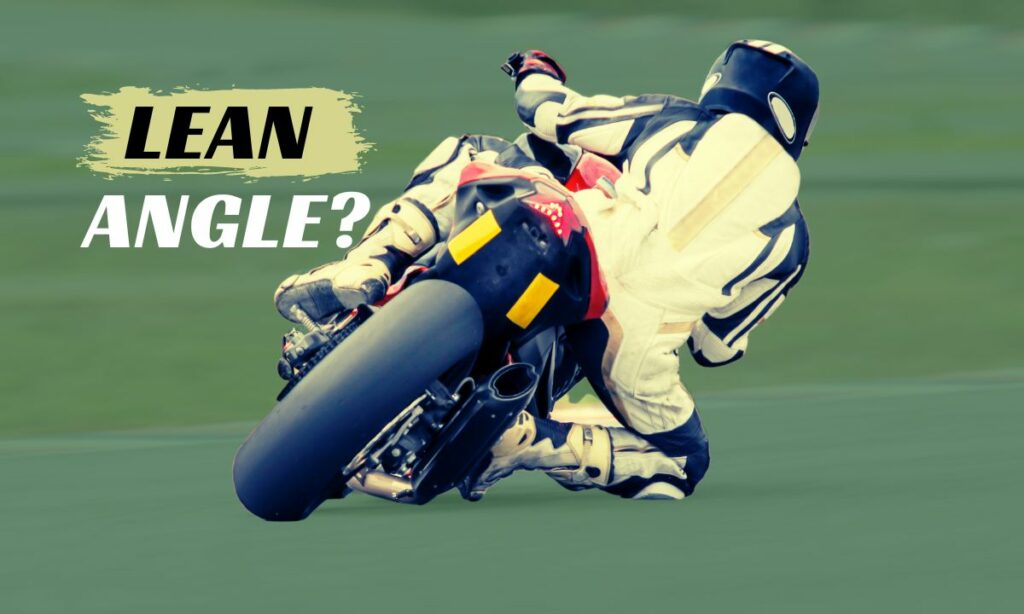Leaning your motorcycle as much as possible while cornering is fun.
But if you are not cautious, it can soon turn out to falling on the bike and crying out loud in pain!
So how far can one lean a motorcycle?
Motorcycle lean angle is dependent on several factors.
In general, cruiser motorcycles can lean around 30º, street bikes and sports bikes can lean around 40º to 45º, and supersport bikes can lean a maximum angle of around 50º to 55º.
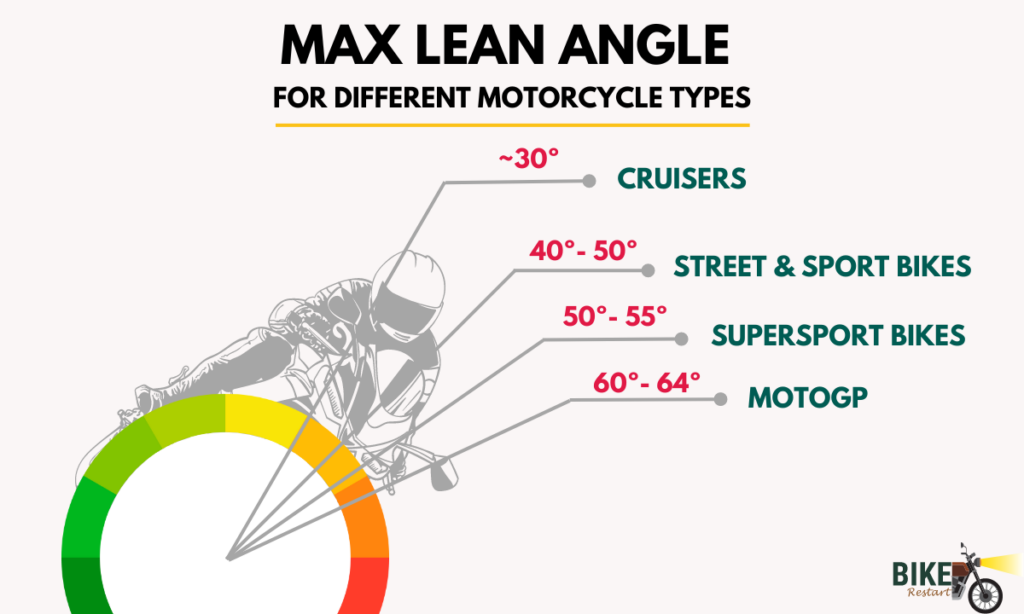
Apart from the type of motorcycles, several other factors impact the lean angle.
This includes – road conditions, tire quality, motorcycle speed, ground clearance, and the riding skills of the rider.
Let’s deep dive into each of these factors and know how they impact the lean angle.
Max lean angle for different motorcycle types
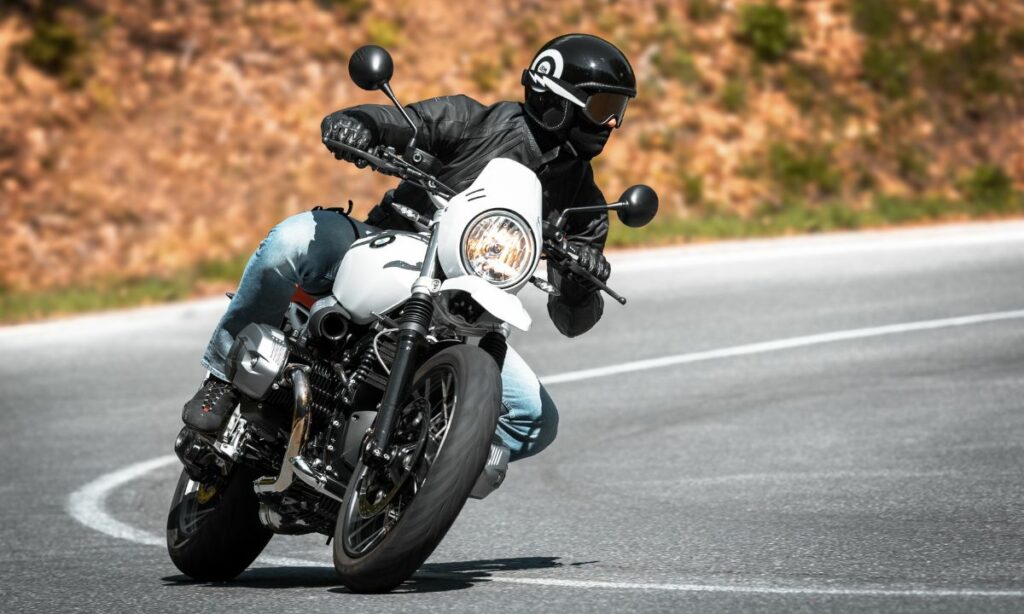
The maximum lean angle for a motorcycle depends on a wide variety of factors.
And the most notable of them all is – the type of motorcycle.
In general, cruiser motorcycles can lean around 30º.
Some cruisers may lean a bit more. And some a bit less. But a ballpark maximum lean angle of 30º is the norm.
Similarly, street bikes and sports bikes can lean around 40º to 45º.
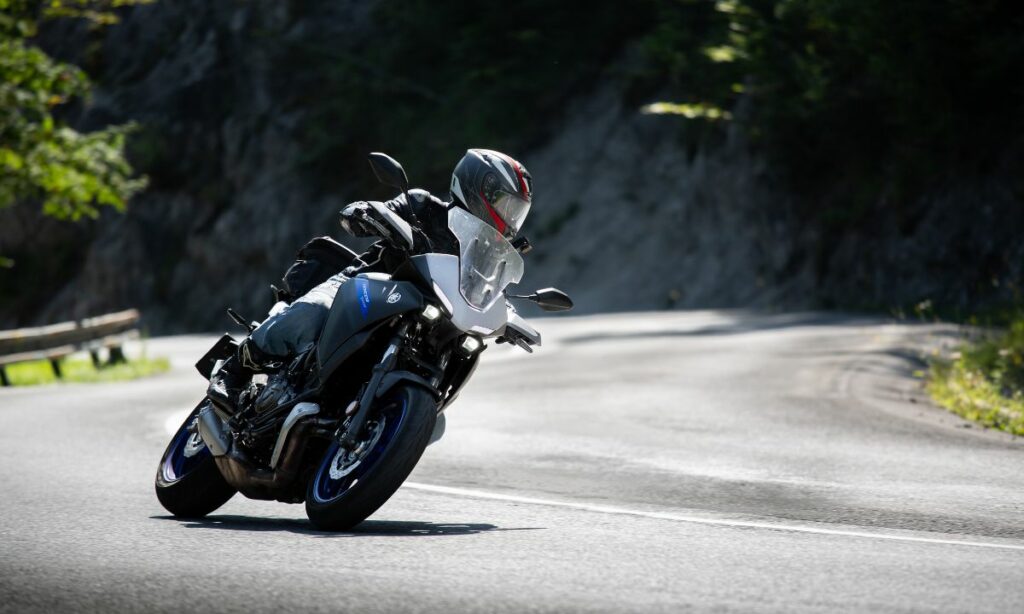
Sports bikes have slightly higher lean angles than standard street bikes. But it varies from model to model.
Riders usually talk about the lean angle in correlation with the amount of maximum lateral force the tire can take.
For standard motorcycles, the tire can take a maximum of around 1g. Which translates to a lean angle of 45º (tan45º = 1).
So, around 45º lean angle is the usual maximum lean for these kinds of motorcycles.
Lastly, supersport bikes have a maximum lean angle of around 50º to 55º.

These are racing motorcycles.
As a result, have higher lean angles to allow for faster cornering.
Premier racing motorcycles like MotoGP bikes claim to have a maximum lean angle of 64º while cornering on the race track.
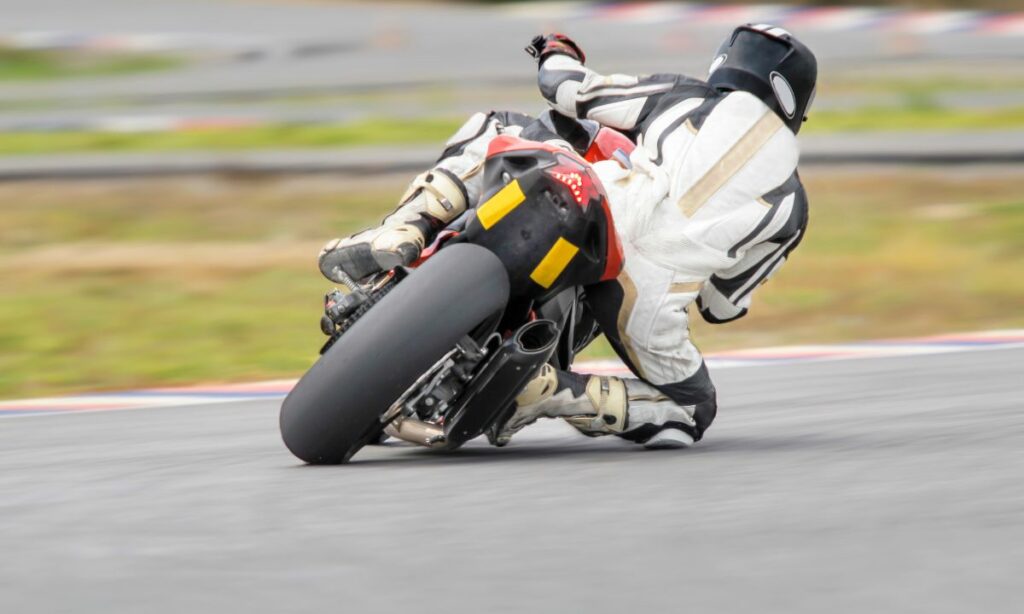
But such high lean angles are impossible to achieve on regular pavement roads.
These are the ballpark maximum lean angle for different motorcycle types.
But take it with a pinch of salt.
There are a lot of factors at play here. That affects the lean angle of your bike.
Lean angle depends upon several factors
Apart from the type of motorcycle, here are the factors affecting the motorcycle lean angle:
- Road type and conditions
- Tire quality and traction
- Motorcycle speed
- Ground clearance
- Riding skills and technique
Let’s discuss each of these factors in detail.
Road type and conditions
The type of road you are driving your motorcycle on impacts a LOT on how much you can lean.
Race tracks are the best type to achieve the maximum lean with your motorcycle.
Contrast that with riding on a gravel or a dirt road.
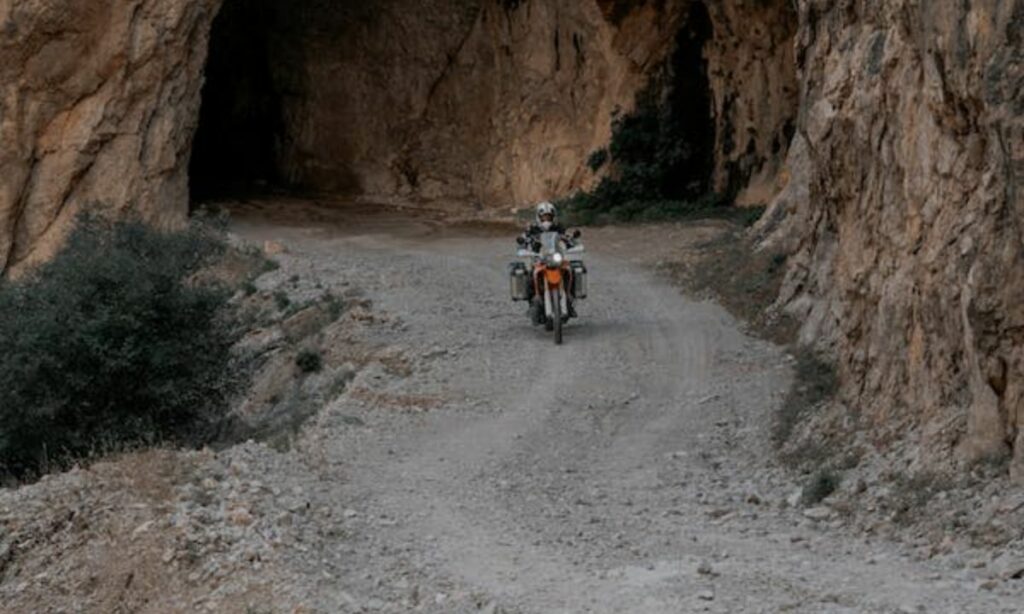
You cant lean much. Unless you want to fall over.
A good pavement road falls somewhere in between these two extremes.
You can lean your motorcycle far more than you can on gravel roads. But still less than what you could on a race track.
Even on regular roads, there are variances.

Another variable – rain.
If the road is wet due to rain, again, you cant corner with a steep lean angle.
Tire and traction
Next important factor.
Your motorcycle tires and how good the tires grip the road – i.e., traction.
The tires must have good traction to – (a) mitigate shocks from the road surface; and (b) provide the longitudinal and lateral control forces for vehicle acceleration, steering, and braking.

Put simply, tires are important to have good control of your motorcycle.
That’s why, the better the tires are on your bike, the better will be the lean angle.
The tire condition, the age of the tire, how big the tire is (skinny vs wide), the compound the tire is made of – all impact the lean angle.
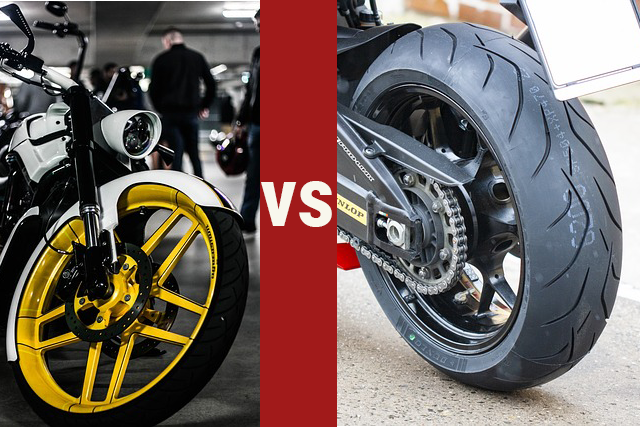
So, to have the best possible lean angle – make sure the tires are great.
The tires must be in good condition. They are properly inflated with optimum pressure. The treads are not worn off. They are not too old, etc.
Motorcycle speed
The speed of the motorcycle while leaning is another major factor in determining the lean angle.
The higher the speed, the higher will be the possible lean angle.

That’s common sense.
But, there are riders who argue against the importance of speed in relation to lean angle.
I am no expert in the physics of motorcycle cornering. But I am of the firm belief that speed does matter.
At lower gears, try cornering.
It’s tough to lean much without falling over.
Speed does play an important role in determining the lean of the motorcycle.
Ground clearance
To achieve a higher lean angle, the motorcycle must have higher ground clearance.
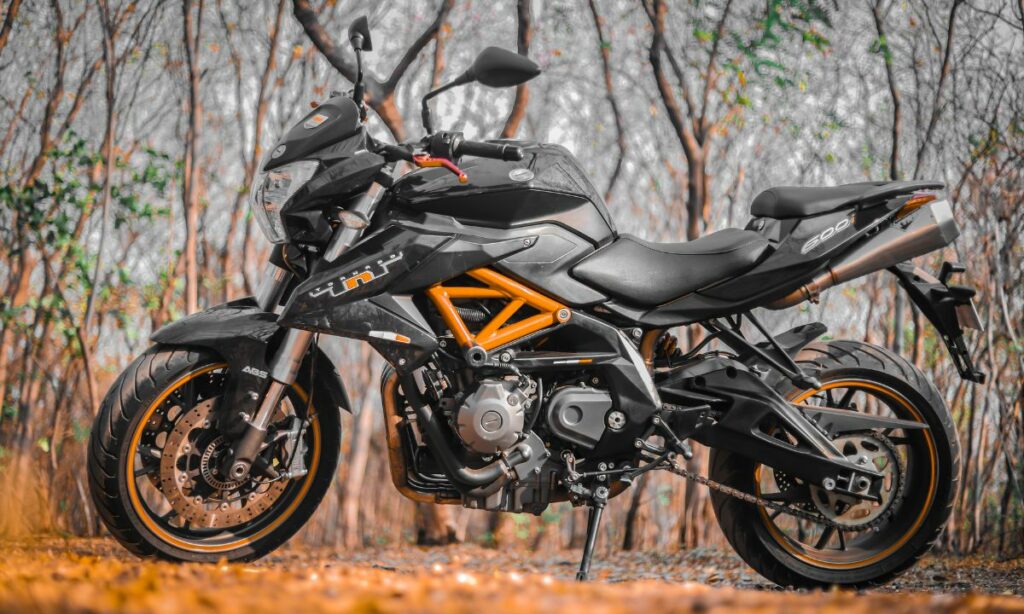
If not, the motorcycle will touch down the ground and the tire can easily lose traction. Resulting in the bike skidding on the road.
Foot pegs are the usual culprits in such cases.
Even apart from that, aftermarket engine guards, low clearance parts, and rims of small tires – can all cause problems by making contact with the road.
Riding skills and technique
Lastly, riding skills are another important factor.
A skilled rider with great cornering technique can lean more and push the limits of the lean angle.
Case in point:
And a beginner rider is better off not finding the maximum lean angle of his/her motorcycle.
This is in no way to criticize or condemn beginner riders.
The intention is to set manageable expectations.
If you are a beginner rider, you are better off mastering cornering rather than testing the limits of your bike’s lean.
How to improve your lean
So how can you improve your lean while cornering?
By practice of course (duh!).
Here are some pointers.
If you are a beginner rider, start practicing an 8.
Basically, you drive your motorcycle in the shape of 8. And keep repeating.
This helps you improve your cornering skills. You accelerate, lean, brake, turn – all packed together in this exercise.
The best way to do this is to go to a ground or empty pavement road, set up two poles, and use them as cornerstones to circle in the shape of ‘8’.
Make sure you are wearing full gear.
You might fall down on your bike.
So ensure no harm by wearing protective gear on yourself.
Also, if you are practicing leaning in and testing the lean limit, you most likely will be knee-scraping.
The gear protects you a lot there.
Another important skill is learning counter-leaning.
Sure, you can lean in while cornering. Marc Márquez leans in.
But you also must learn to counter-lean.
This is especially helpful while riding on gravel or dirt roads.
Even on pavement roads, if you are not too experienced with sharp leans, counter leaning or neutral helps to avoid falling over.
Insane leans in MotoGP
Not too long ago, MotoGP marketed remarkable lean angles from their motorcycle prototypes.
The claim was that the elite MotoGP riders can achieve a maximum lean angle of a staggering 64º.
64 freaking degrees!
These outstanding MotoGP motorcycle prototypes could withstand a lateral force of up to 2g on their tires.
That’s some insane lean-angle claim there by these motorcycles.
Needless to say, the Grand Prix motorcycle racing had indeed witnessed some amazing leans on their race tracks.
FAQs
Leaning the motorcycle too far might result in either knee scraping or worse, toppling and falling on the motorcycle. So, leaning too far is not recommended.
MotoGP riders lean higher to the extent of 50º to 60º. In their marketing video, MotoGP shows the rider leaning as high as 64º.
If your knees are touching the ground (knee down or knee scraping) or if the footpegs are close to touching the ground, the lean is too much. Even worse, if you are losing the motorcycle balance, stop leaning further.
Before you go…
Here are a few more posts that might interest you:
